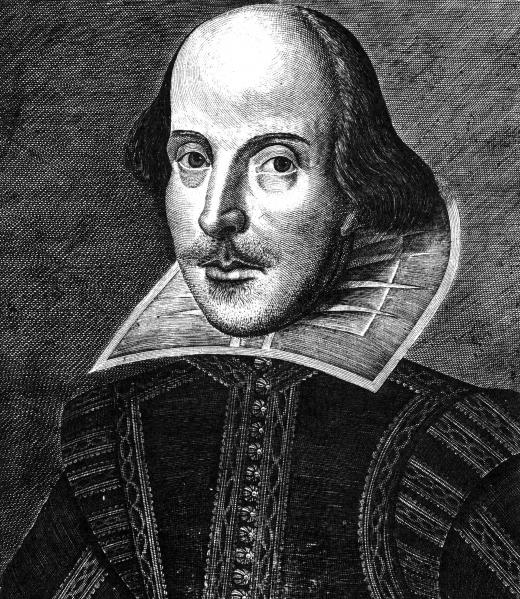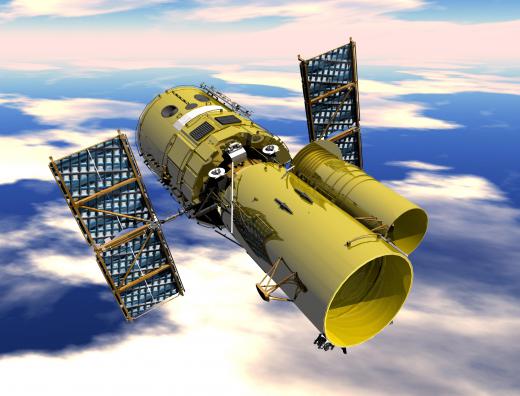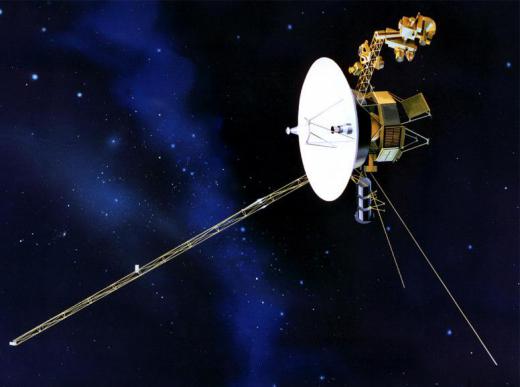What are the Moons of Uranus?
 Michael Anissimov
Michael Anissimov
Uranus, the seventh planet from the Sun, has 27 recognized moons, less than half the number orbiting either Jupiter or Saturn. Five are massive enough to have a spherical shape: Miranda, Ariel, Umbriel, Titania, and Oberon. All of Uranus' moons are named after characters from the works of Shakespeare or Alexander Pope. The smaller moons are named Cordelia, Ophelia, Bianca, Desdemona, Juliet, Portia, Rosalind, Cupid, Puck, Mab, and many others. A certain section around Uranus, between its main rings and the orbit of the moon Miranda, is very crowded, with numerous small moons locked in unstable orbits. Eventually these moons may collide with each other.
The moons of Uranus were only observed up close by the Voyager 2 space probe in 1986. Otherwise, numerous Uranian moons have been discovered by ground telescopes, but they mostly appear as fuzzy dots. Uranus' largest two satellites, Titania and Oberon, were discovered by the same astronomer who discovered Uranus itself, the British William Herschel, in 1787. Ariel and Umbriel were then discovered by William Lassell in 1851, and these first four moons were named in 1852 by Herschel's son John.

Uranus has an interesting range of moons, though not as rich or varied as those of Jupiter and Saturn. Uranus' moon Miranda, with a diameter of 480 km, has among the most jumbled surfaces in the Solar System, including the tallest cliff, Verona Rupes, with a height of 20 km (12 mi). The remaining four large moons have similar diameters, ranging between 1100 km (684 mi) and 1600 km (1000 mi). Most of these moons are made of about 50% water ice, 30% silicate rock, and 20% methane ices. It is all the methane in Uranus' atmosphere that gives it and its companion planet Neptune their blue colors.

Many of Uranus' moons have similar geological features: canyons, cliffs (rupes or escarpments), chasms (chasmata), and the ever-present craters. In the Uranian system, these are all names after places or characters from the works of Pope or Shakespeare, with an emphasis on Shakespeare. Examples are the Lear crater and Hamlet crater on Oberon.
Titania, the first moon to be discovered, possesses a large canyon, among the largest in the Solar System, much larger than the 1.6 km (1 mile) deep Grand Canyon on Earth, and in the same class as Valles Marineris on Mars, which is up to 7 km (4.3 mi) deep. At 1577 km (980 mi) in diameter, Titania is the eighth-largest moon in the Solar System.

Oberon, the second-largest moon orbiting Uranus, has a very old cratered surface, mostly gray but with some large white splotches across it. Unlike most of the other Uranian moons, Oberon has tall mountains, including one about 6 km (3.7 mi) in height. The floors of craters on Oberon are covered with a dark material of unknown origin.
Ariel is Uranus' brightest moon, and is covered with craters which are slightly younger than those on the other large moons. In 2006, Ariel transited Uranus, leaving a shadow on the cloud tops. This event was observed using the Hubble Space Telescope.
AS FEATURED ON:
AS FEATURED ON:













Discuss this Article
Post your comments